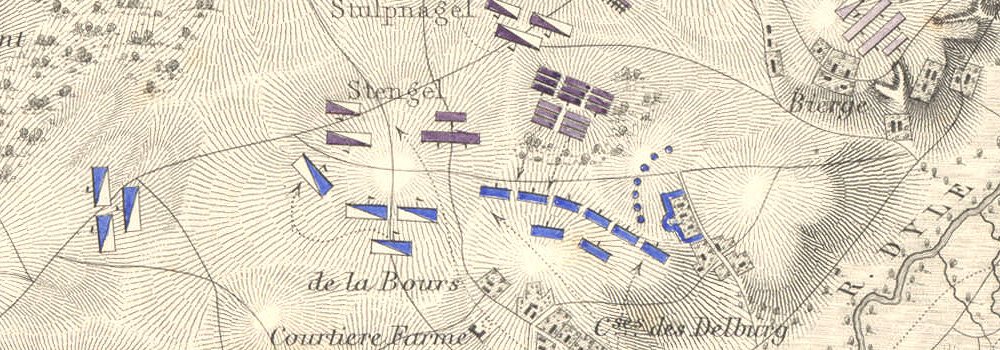After having ordered division Vegesack (the 4th Swedish division) to withdraw to Rostock, the allied commander Walmoden suddenly changed his mind. On the 26th he ordered Lieutenant general E. G. E. Baron von Vegesack to advance his division to a new line at Doberan-Berendshagen instead of the planned withdrawal towards Rostock. Division Vegesack began moving towards Doberan-Berendshagen early on the 28th. A vanguard was led by Osten-Sacken (compromising 5 squadrons, 2 cannon, 1 jaeger battalion and 6 infantry companies). This vanguard marched along the road towards Konow, while a left flank guard commanded by colonel Müller (compromising 4 squadrons and 10 infantry companies) moved towards Berendshagen. Advancing along the road towards Rostock through Konow was the French general l´Alleman. He had been ordered to find the enemy division Vegesack. L´Alleman had a French and a Polish squadron, 4 cannons of battery Gerstenberg, 1 company of Holstenske Sharpshooters 2nd and 1 French infantry battalion at his disposal.
The vanguard of the French-Danish ´was being led by l´Allemand in person. It ran headlong into the enemy just north of Retschow. The Swedish opened the battle, when the 4 Swedish squadrons (2 squadrons from the Schillske hussars and 2 squadrons from the Skånske carabinier regiment) charged down the road at l´Allemands oncoming squadrons. The French and Polish squadrons leading the vanguard did not receive the charge but fled to the side of the road and routed towards Ivendorf. This robbed battery Gerstenberg of it´s much needed cavalry support. The Danish battery had taken up a position on Kronenberg hill north of the village. Upon seeing the Poles and French cavalry flee, the Swedes turned up the hill and charged the unprotected Danish battery. The charge was repulsed with canister fire, and the Swedes withdrew to safety. Meanwhile the company of Holstenske sharpshooters 2nd had arrived at the battery, and now provided adequate cover and support for the gunners. The battery was soon thereafter reinforced with a cannon and a howitzer from the main force. The French infantry battalion took up a position in the edge of the forest west of Retschow and awaited the Swedes in cover of the forest.
The Swedes advanced towards the forest with a jaeger battalion and the surviving disorganised cavalry on the jaegers left flank. While major Elfvings Swedish battery deployed on the hill south of Ivendorf, the cavalry and jaegers pushed towards the French battalion. A two and a half hour long artillery duel ensued, in which the small Danish battery of 3-pounder guns and a single howitzer traded fire with the Swedish battery of 6 6-pounders and 2 8-pounder howitzers. The Swedish jaeger battalion was in the meantime pushing the French battalion out of the forest (neither of the two battalions fired a single shot, the French simply withdrew when the jaegers advanced).
To late Vegesack decided to commit his reserves to the battle (his infantry companies, still uncommitted). When he made the decision, l´Alleman had already given the order to fall back (he had completed his mission, he had found and made contact with the vanguard of the division he had been scouting for).
Lieutenant general E. G. E. Baron von Vegesack later admitted that he had lost 60 men (20 dead and 40 wounded), but he also claimed that l´Alleman had lost 253 men !!!
A report from the Danish commander informed (with a great deal of traditional Danish irony) the Danish king that:
"That there is no reason to doubt the Swedish claims, as this would mean that the French battalion had to have been halved in the forest, without receiving any enemy fire. The French battalion took part in the brigades march the next day. Therefore we cannot add any truth to the horrific Swedish tale of carnage as l´Allemands vanguard losses were 1 mortally wounded (later dead) sharpshooter, 1 dead limber-officer, 3 dead limber-horses and 1 destroyed wagon".
